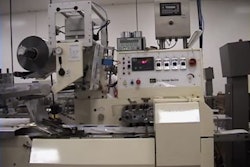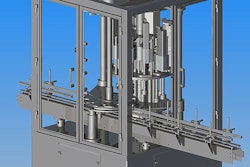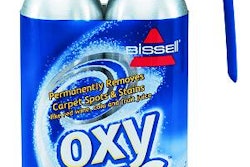Aseptic filling of paper/foil containers is common enough. And high-speed paper cup making is equally proven. But rarely have the two been combined as effectively as they are in the combishape packaging system behind the 1-L containers of NaturLinea premium milk from CAPSA, a large cooperative in Oviedo, Spain.
Supplied by Sig Combibloc, the combishape system’s uniqueness is in its ability to produce aseptic beverage cartons in something other than the basic rectangular shape that’s been around for so long now. Sig Combibloc claims it has defined “more than 40 basic shapes, each with its own characteristics.” CAPSA, which is the first to commercialize the new technology, chose an oval shape for its product, but the shape can be developed pretty much according to the customer’s needs.
CAPSA began shipping product in March of this year. It’s clear that being able to offer a novel package shape was a key driver in the firm’s decision to play the pioneer.
“By letting us further enhance product differentiation through carton shape, combishape represents a revolution in the packaging sector,” says CAPSA president Pedro Astals. “In the future, brand names will only survive if they can combine optimal product performance with an unmistakable market identity.”
Selecting a unique shape for NaturLinea was especially important because the product itself is an innovation. It contains a natural ingredient called Tonalin®, derived from safflower, that promotes the breakdown of fat tissue in the body and transforms existing fats into energy. CAPSA is the only dairy in Spain that offers such a product, so the unique combishape format underscores the value-added product’s uniqueness. As the firm’s promotional tagline puts it: “The most advanced packaging for the most innovative product.”
Perhaps the single biggest difference between combishape and aseptically filled paper/foil cartons long made available by Sig Combibloc and others is that previous versions are either made from a single roll of material or from blanks that are erected and filled. The combishape, on the other hand, is assembled from three separate roll-fed pieces: sleeve, base, and lid, all three of which are made of a paperboard/foil/PE construction. Also significantly different is the three-part closing fitment: adapter, pull-tab, and screw cap.
Four sections
The forming and filling system that brings it all together consists of four different sections: adapter sealing station, body forming unit, transfer station, and filling unit. Adapter sealing is a two-step operation. First, round holes are punched into the rolls of lidding material. Second, the adapter, which is injection-molded of polyethylene, is ultrasonically sealed into the hole from the product-contact side of the lidding material. The adapter has a 30-mm diameter.
The body-forming unit receives three rolls of material: lid, base, and sidewall. In the first step, lids are punched out, crimped around the edges, and sucked onto the tip of one of 12 mandrels arranged evenly around a mandrel wheel. Sidewall material is cut from its roll, formed into a sleeve, and joined—by means of heat and pressure—to a lid as the sleeve is wrapped around the mandrel. Then the joined sleeve and lid are pushed off of the mandrel and into a second mandrel, this one hollow, on a second 12-mandrel wheel. A bottom is sealed to the sleeve on this mandrel wheel, again by means of heat and pressure.
Next is the transfer station, where the fully formed containers are transferred mechanically into pucks. These carry the containers through an applicator that puts a foil pull tab on each injection-molded adapter. A pick-and-place device then puts containers in the pocketed conveyor that leads into the sterilizing/filling/closing station.
While the entire container-forming process is a continuous-motion operation, filling is an intermittent-motion process, all done in an aseptic zone. First, the containers are blown out and preheated, then blown out and preheated again. Sterilizing hydrogen peroxide is injected through the adapter and the packs are dried. Filling follows, after which the foil pull tab is heat-sealed to the adapter so that the container is now hermetically closed. Only then do the containers exit the aseptic zone. Filling speeds, says Sig Combibloc, are in the range of 165/min.
Filled containers, still in the pocketed conveyor that took them through the filling and closing steps, are mechanically picked and placed into another puck-based discharge conveyor eight at a time.
Capping and case packing are all that remain. Capping is done on a nine-station rotary capping machine from Alcoa. Finished cartons are then picked 12 at a time and placed into four corrugated trays, three per tray. After two pick-and-place cycles, the four trays, each holding six containers, are discharged and sent through a shrink-wrap machine. A plastic carry handle is applied by a machine made by Condi Film, represented in North America by techno pak. Palletizing is done by an Ocme system.
And just how daunting was the installation of such a complex system, particularly when no one had done it before on a commercial basis?
“Naturally we felt some apprehensiveness where maintaining asepsis is concerned,” says Javier Echevarria, industrial and technical general subdirector at CAPSA. “But asepsis was confirmed right from the first tests, and no issues concerning product sterility have arisen.”
Echevarria says both retailers and consumers appreciate the novelty of the new product/package combination.
“We have been able to combine a totally new product with a unique carton, and we think it has everything it needs to be successful.”























